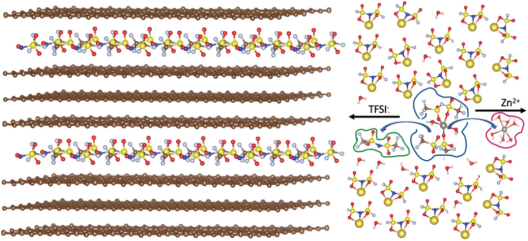Innovative Cell Chemistry Developed for Dual-Ion Battery
A long durability, low costs and high sustainability - the requirements for stationary energy storage systems, for example for wind or solar energy, are high. One promising perspective is the still young dual-ion technology. In a collaboration between Pacific Northwest National Laboratory and the MEET Battery Research Center, scientists developed a new type of dual-ion battery. The cell chemistry graphite || zinc metal with an aqueous electrolyte is safer, cheaper and more sustainable than proven energy storage systems and showed a promising electrochemical performance. In addition, fundamental mechanisms within the dual-ion battery were elucidated.
Away from Cobalt and Nickel, towards Renewable Resources
As a possible alternative storage technology besides the state-of-the-art lithium-ion battery (LIB), especially for large-scale energy storage, the dual-ion battery is increasingly moving into the focus of research. In contrast to lithium-ion technology, this technology allows to avoid the use of environmentally harmful and expensive metals such as nickel or cobalt. Another important difference is the charging and discharging mechanism: instead of only one type of ion - lithium ions - the electrolyte anions are also involved in energy storage in the dual-ion battery. The electrolyte thus functions as an active material, which offers researchers further optimisation approaches.

Dual-Ion Battery Prototype Shows Advantages
The Pacific Northwest National Laboratory and MEET Battery Research Center at University of Münster have particular expertise in research on dual-ion technology. The novel laboratory-prototype of a dual-ion battery cell developed by the transatlantic research team showed several advantages: "The cell chemistry graphite || zinc metal with the specially developed aqueous electrolyte exhibits advantages with respect to cost, sustainability and safety compared to lithium-ion batteries, due to the materials used ", explains Dr Tobias Placke, Group Leader Materials at MEET Battery Research Center. For example, the cathode of the energy storage device can consist of graphitic carbons, which can be produced from renewable raw materials. In addition, water and biological binders, such as those found in yoghurt, can be used in electrode production. Further, the zinc metal-based anode offers a better material availability.
Up to now, the energy density of dual-ion batteries cannot compete with lithium ion batteries. The novel system showed a promising electrochemical performance, which shall be optimised in further research.
"In our investigations, we were able to successfully elucidate basic mechanisms for anion intercalation in graphite in an aqueous based system by means of experimental work and computer simulations. We have thus gained important insights for further research on dual-ion technology for grid level energy storage," explains Dr Ismael Rodríguez-Pérez from Pacific Northwest National Laboratory.
The detailed results have been published by Dr Ismael A. Rodríguez-Pérez and 12 other scientists from the Pacific Northwest National Laboratory together with Jens Wrogemann, Dr Tobias Placke and Prof. Martin Winter from MEET Battery Research Center as an open access article in the journal "Advanced Energy Material”.

